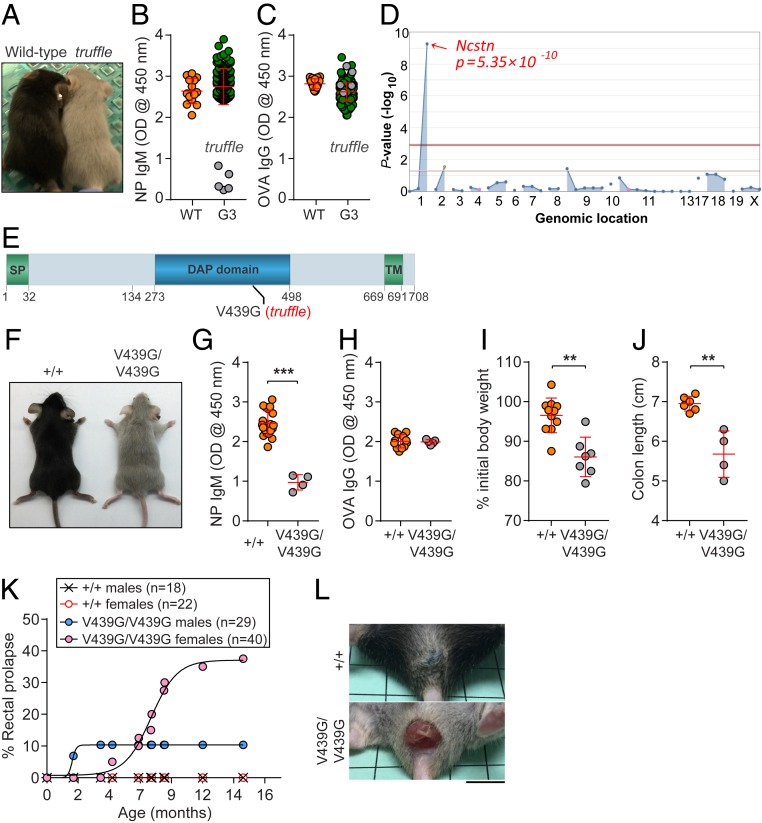Fig. 1.
The truffle phenotype. (A) Photograph of a male truffle mouse and wild-type littermate. (B) Decreased TI NP-specific antibodies in truffle mice (highlighted in gray dots) at 6 d after NP-Ficoll immunization. Data are from 247 G3 mice in a screen group that includes the truffle pedigree. Wild-type (C57BL/6J) mice immunized with the same antigen served as controls. Data are presented as absorbance at 450 nm. (C) Normal TD OVA-specific antibodies in truffle mice at 14 d after immunization with OVA/alum. (D) Manhattan plot. −Log10 P values (y-axis) plotted against the chromosomal positions of mutations (x-axis) identified in the affected pedigree. (E) Protein domains of mouse NCSTN (708-aa long). The location of the truffle mutation, which results in substitution of valine 439 to glycine (V439G) in Ncstn, is highlighted in red; SP, signal peptide; DAP, DYIGS and peptidase homologous; TM, transmembrane. (F) Photograph of a male mouse with CRISPR/Cas9-induced V439G substitution (NcstnV439G/V439G) and a wild-type littermate at age 8 wk. (G and H) TI (G) or TD (H) antibody responses in mice with the indicated genotypes for Ncstn following immunization with NP-Ficoll or OVA/alum, respectively. Data are presented as absorbance at 450 nm. (I and J) Weight loss (I) and colon length (J) analysis of mice with indicated genotypes on day 10 of treatment with 1.3% DSS. (K) Incidence of spontaneous rectal prolapse in wild-type and NcstnV439G/V439G mice. (L) Macroscopic view of rectal prolapse in NcstnV439G/V439G mice. Each symbol represents an individual mouse. P values were determined by Student’s t test. Results are representative of two (G and H) or three (I and J) independent experiments with 4 to 20 mice per genotype. Error bars indicate SD.

